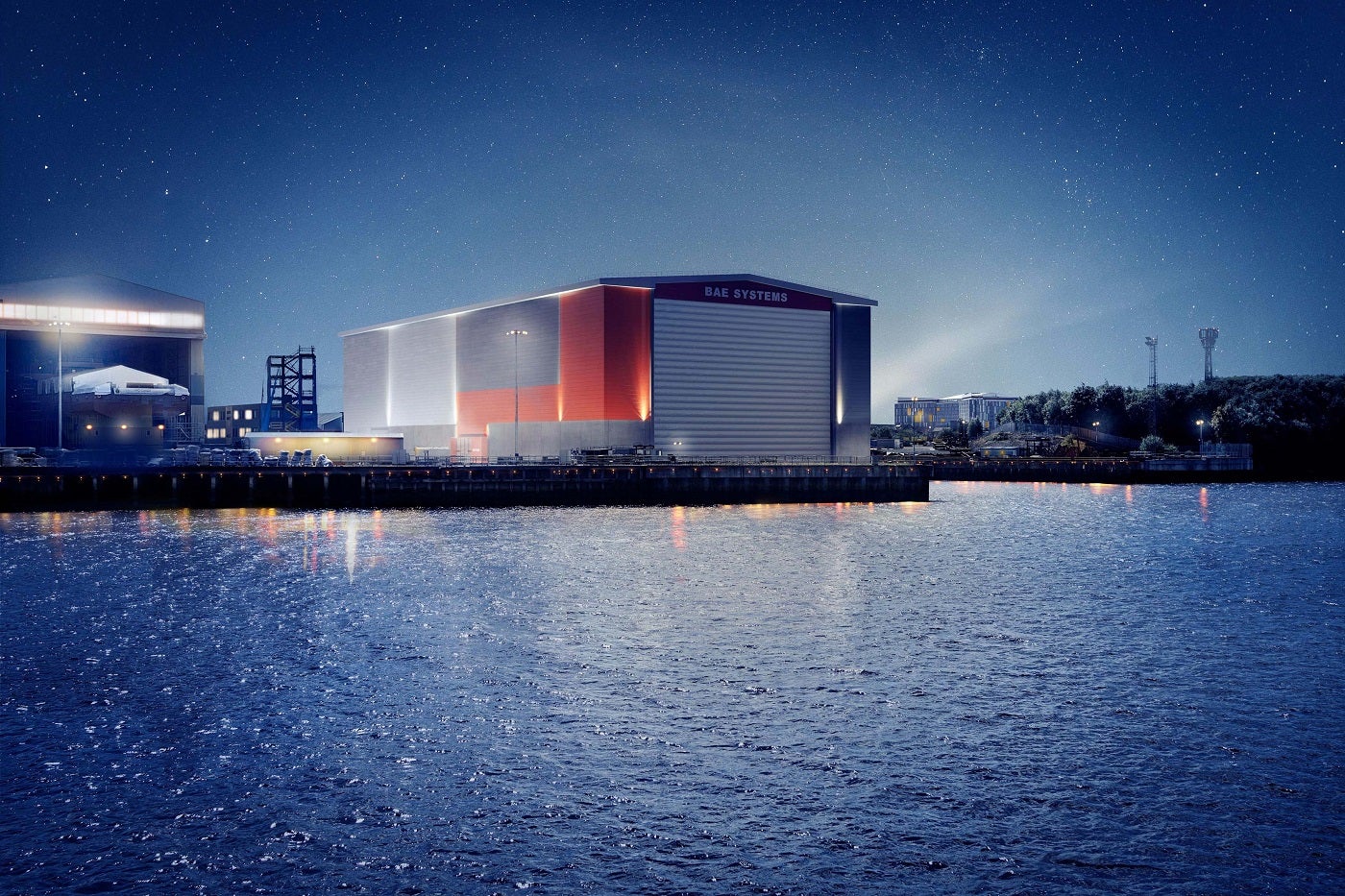
BAE Systems has initiated the construction of a ship hall that will start the assembly of the UK Navy’s next-generation frigates, enhancing their capabilities for safeguarding against submarine threats well into the 2060s.
This development is part of an investment in BAE’s facilities, aiming to modernise shipbuilding processes and ensure the construction of Type 26 frigates.
BAE Systems secured a £4.2bn ($5.1bn) contract last year from the UK Ministry of Defence to construct the next five City-class Type 26 frigates for the Royal Navy. BAE Systems is already working on the initial three ships, and all eight Type 26 vessels are expected to be delivered by the mid-2030s.
Parallel assembly of Type 26 frigates
Amid the expansive construction project, two Type 26 frigates will be built in parallel within this new facility, expediting the assembly of these ships. The frigates are set to replace the Type 23 class vessels dedicated to submarine hunting.
Eight Type 26 frigates have been commissioned, all bearing the names of major UK cities, with HMS Glasgow leading the fleet. Currently, most of the construction work takes place at BAE’s Govan yard, after which the ships are transferred to the Scotstoun facility for finalisation, testing and acceptance.
Some Type 26 frigate developments include BAE Systems initiating the construction of the third Type 26 frigate, HMS Belfast, in Glasgow’s Govan shipyard on the River Clyde in 2021. The UK Royal Navy’s first Type 26 or City-class frigate, HMS Glasgow, was launched into the water for the first time in 2022. BAE Systems initiated the float-off process, with the ship’s hull being lowered from a barge into the River Clyde.
The Royal Navy’s Type 26 Frigate got continuously delayed. As per the latest information, it is said that the ship will reach its initial operational capability by October 2028 instead of October 2027, at an extra cost of £233m, according to GlobalData’s The Global Naval Vessels and Surface Combatants Market 2023-2033 report.
Enhanced naval shipbuilding capabilities
Currently, the existing sheds at the Govan yard only provide coverage for the fore and rear sections of the frigates. The segments are joined together in the open area at Govan, exposing the ships to the elements for extended periods. This exposure has been a hindrance, affecting the pace of work on the vessels.
The new ship hall, now under construction, will be 170m long, with a width of 80m. Equipped with two 100-tonne (t) cranes and an additional two 20t cranes, the facility will accommodate up to 500 workers per shift dedicated to frigate construction.
Besides shielding the ships from harsh Scottish weather conditions, the new ship hall will enable the frigates to emerge from the construction process in a more advanced state, streamlining the production cycle.
Simon Lister, managing director of Naval Ships at BAE Systems, commented: “This new hall will give us some of the best facilities in the world and completely modernise our approach to shipbuilding. It, alongside the investments already under way to digitise our processes, will ensure Govan continues to be something that the city of Glasgow can be truly proud of.”
The construction of this ship hall represents a leap forward in naval shipbuilding capabilities and reflects BAE Systems’ commitment to building the Royal Navy’s next-generation frigates.




